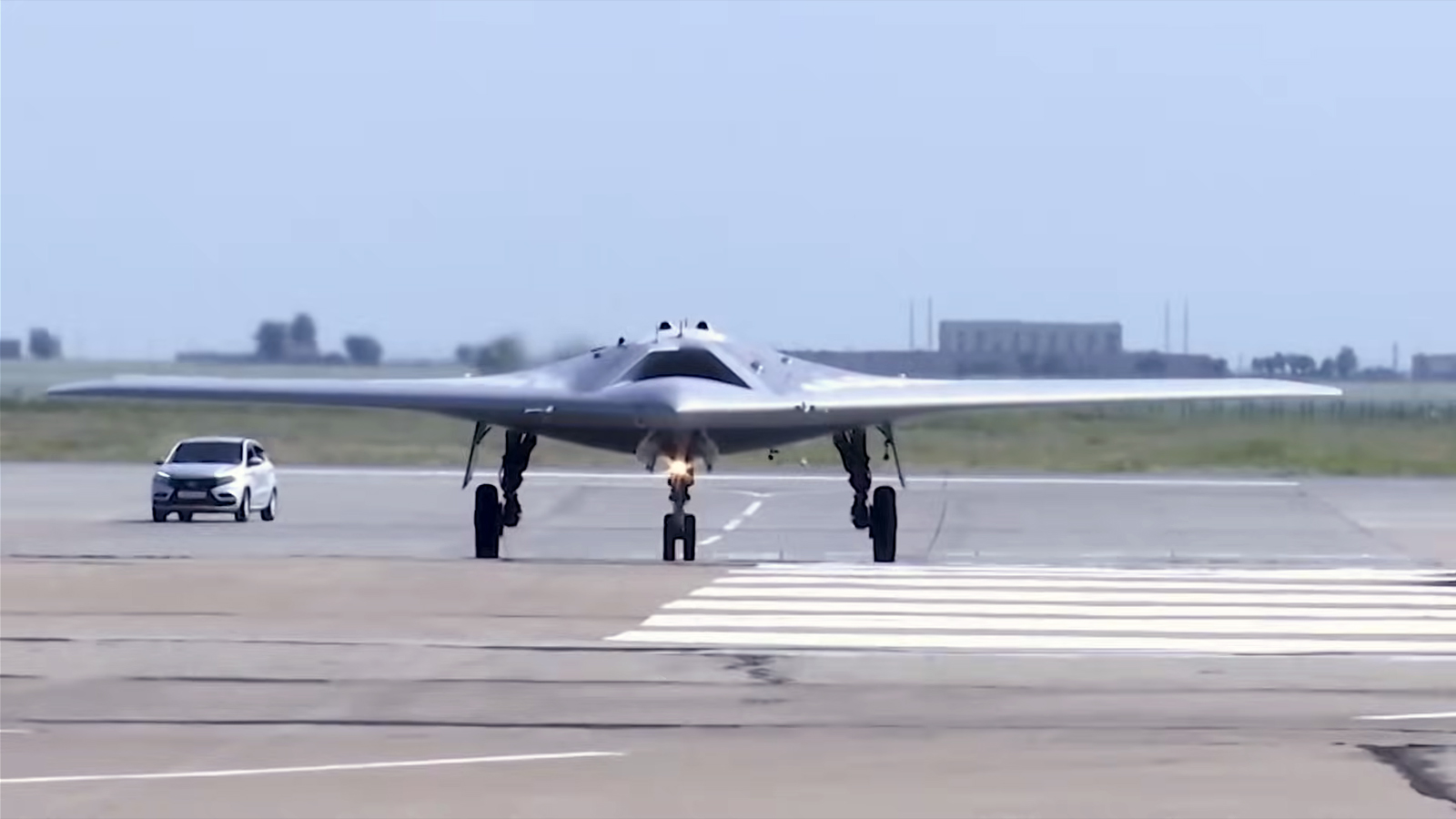Downed Russian drone used at least 30 chips from Western companies — silicon from Xilinx, TI, Marvell, Micron, and others found in the wreckage
Analysis of Sukhoi S-70 Okhotnik-B drone revealed vital Western components.

A Sukhoi S-70 Okhotnik-B unmanned combat aerial vehicle (UCAV), found crashed behind Ukrainian lines, was built using a plethora of Western chips. The drone included parts from Analog Devices, Fairchild Semiconductor, Infineon, Marvell, Maxim, Micron, ON Semiconductor, STMicroelectronics, Texas Instruments, Xilinx, and more — some of which also produce electronics for the U.S. military.
According to the German news site Golem.de (machine translated), the drone was deliberately shot down by a Russian jet after it went out of control in the Donetsk region, some 16 kilometers behind the frontlines. Ukrainian soldiers then recovered the wreckage and an investigation by Ukraine’s military intelligence service (GUR) revealed these chips and their sources.

The S-70 Okhotnik-B is one of Russia’s most advanced drone prototypes, and it’s supposed to act as an autonomous wingman to the Sukhoi Su-57 using artificial intelligence. Although the S-70 is primarily a reconnaissance drone, it’s reported to have an internal weapons bay capable of carrying up to 2,000kg of missiles, rockets, or bombs. Because of this, the S-70 requires advanced electronics to help accomplish its mission. Although the West has heavily sanctioned Russia, reducing its access to advanced technologies, it’s still able to acquire key components through the black market, allowing Russian companies to continue using Western electronics to produce weapons despite stringent export control. For example, Ukrainian defenders have seen Western technologies in Russian missiles as of late October 2024.
STMicroelectronics says that it “does not approve the use of its products outside of its intended use and have implemented comprehensive trade compliance programs” while Infineon Technologies has stopped delivering to Russia since it invaded Ukraine. However, their chips are among the over 4,000 foreign parts that the GUR found inside 150+ captured Russian weapons and munitions, showing how Western technologies trickle toward Russia despite tight export controls. Although sanctions have reduced the shipments of high-performance chips to Russia via China and Hong Kong by 20%, an investigation by the New York Times shows that over $4 billion in restricted technology entered Russia through a single Hong Kong address.
This is the same problem that the U.S. is experiencing with its sanctions against China — where firms that have been blacklisted from buying American parts just open up shop down the road and buy from U.S. companies before Washington’s ban hammer strikes them again. We truly cannot expect Russian munitions to stop using Western parts, especially if there’s no other alternative, and it is feasable to acquire them. But, at the very least, America and her allies’ efforts to stop their sale will make it harder and more expensive for the aggressor to acquire this much-needed equipment.
Get Tom's Hardware's best news and in-depth reviews, straight to your inbox.

Jowi Morales is a tech enthusiast with years of experience working in the industry. He’s been writing with several tech publications since 2021, where he’s been interested in tech hardware and consumer electronics.
-
scottslayer Last time it was 18, now its 30.Reply
Is this situation like China and GPUs where its still estimated to be getting 1.8 million per month even with the sanctions? -
Geef Probably only a couple actual secret military use chips and the rest were on a single big M.2 drive. Maybe two since they probably want a RAID mirror backup. Some of those high capacity M.2 drives have like 6-8 chips per side.Reply -
USAFRet Reply
RAID? Mirror?Geef said:Probably only a couple actual secret military use chips and the rest were on a single big M.2 drive. Maybe two since they probably want a RAID mirror backup. Some of those high capacity M.2 drives have like 6-8 chips per side.
No, these things don't work like that. -
jlake3 I'm guessing these aren't the kind of chips that are serialized? Would be interesting to see what the flow of these is and where the leakiest distribution channels are, although it sounds like we already have a pretty good idea.Reply
Also kinda surprised that there's seemingly zero 'Know your customer' requirements for items with sanction controls on them. Wild that a company from Hong Kong that was recently created and only exists on paper doesn't need to prove it has a legitimate, compliant end use. -
Late_Apex Most likely going through India as Modi is friendly with Putin and supporting his special operation. Its a shame no one calls this out because too many greedy companies rely on India for cheap tech labor and everyone looks the other way…Reply -
ingtar33 you want to stop this? start arresting the CEOs of those companies for treason. this will stop immediately. and suddenly those companies will lock down sales and verified clients intently.Reply -
das_stig Lets be honest here, companies see profits and don't care who they sell too until caught red handed but they plead ignorance and 3rd party bad actors and say prove we did it. They know selling to Honk Kong and other countries will lead to them being redirected to Russia and other undesirable countries.Reply -
passivecool No, guys, it is actually fine. The drone was not built in russia, but in north korea!Reply -
coder0xff Reply
Don't speak of things you know nothing about.ingtar33 said:you want to stop this? start arresting the CEOs of those companies for treason. this will stop immediately. and suddenly those companies will lock down sales and verified clients intently.